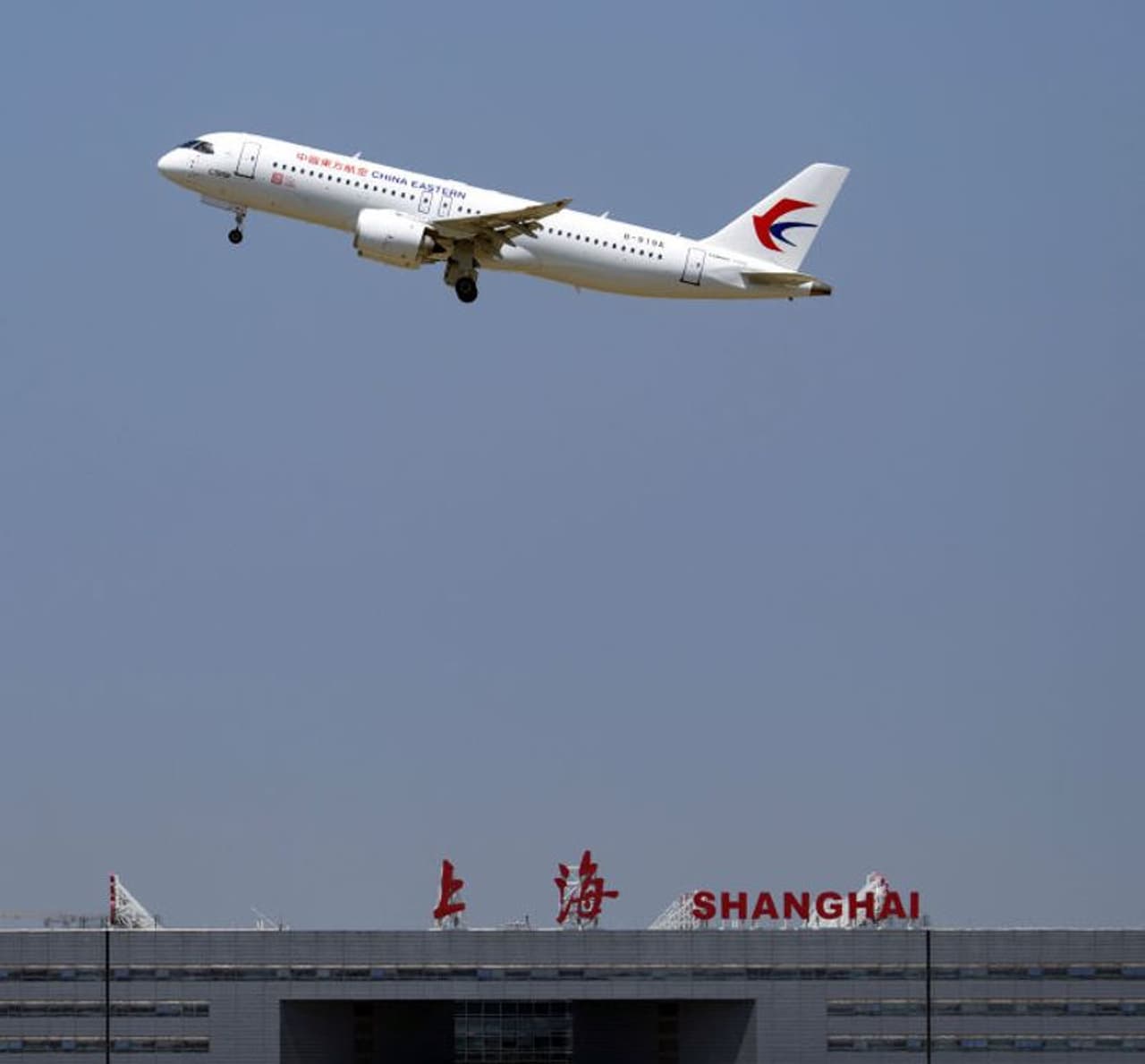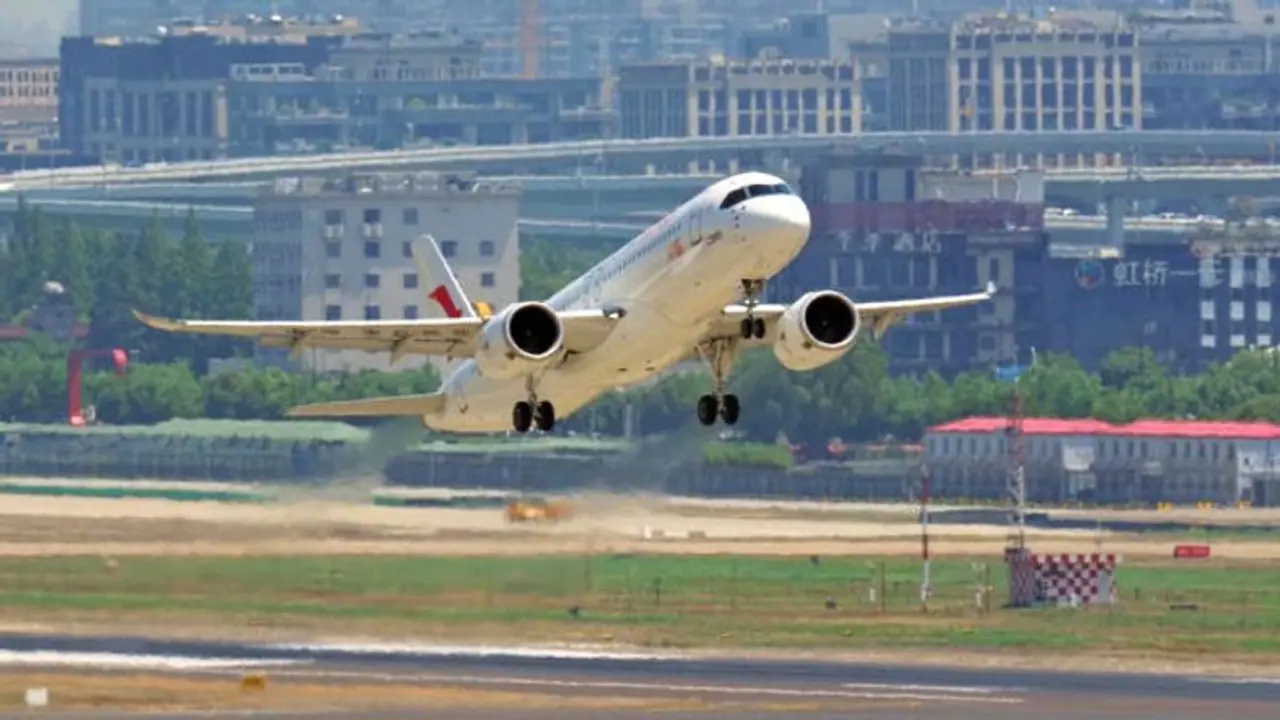If India's objective is to create a domestically-produced passenger plane capable of competing with China's offerings, industry experts emphasize the importance of collaboration between a robust government entity and the private sector. Girish Linganna explains
A few days ago, China's domestically-produced passenger aircraft, the C919, successfully completed its inaugural commercial flight, signifying the country's official entrance into the civil aviation market. This achievement is part of China's endeavour to compete with Western counterparts such as Boeing and Airbus.

The maiden commercial flight of the C919, operated by the state-run China Eastern Airlines, traversed from Shanghai to Beijing. The aircraft accommodated 128 passengers during the journey, which lasted approximately two hours and twenty-five minutes, as reported by the state-run Xinhua news agency.
Featuring a single-aisle design and twin engines, the C919 boasts a seating capacity of 164 passengers.
Building with American Components
Approximately 60 per cent of the components for the C919 aircraft are supplied by American companies. This reliance on foreign technology has compelled Comac to obtain special licenses from entities like General Electric and Honeywell to acquire the necessary parts. Some critical core components and systems, essential for the functioning of the C919, heavily depend on foreign technology.
For instance, the C919's engine is sourced from CFM International, a joint venture between GE Aerospace of the US and Safran Aircraft Engines of France. Michelin, the French tire giant, supplies the C919's tires, while the tire pressure monitoring systems are provided by Crane Aerospace and Electronics, a US-headquartered company.
Collins Aerospace, based in the US, contributes various aircraft systems, including in-flight entertainment, integrated communication, navigation, surveillance, and cabin core systems. Honeywell, another American industrial giant, supplies the C919 with wheels, brakes, and flight control electronics.
India’s potential to build passenger planes
The delicate manoeuvres preceding the sudden halt, followed by an abrupt jolt and a burst of engine thrust... The experience of being pressed into your seat as the aircraft gains speed on the runway. Then, that moment of weightlessness during takeoff. The sensation of soaring through the air is consistently exhilarating. It often sparks curiosity about what it would be like to sit in the cockpit and witness the marvels of engineering that aeroplanes embody. Many may wonder if we will ever have the opportunity to fly on a plane proudly manufactured in India.
Between 2022 and 2040, the Indian aviation market is expected to require approximately 2,200 new aircraft, marking a significant three-fold increase from the current size of the country's commercial fleet. This demand is just slightly below the projected requirements of all Latin American airlines combined and about 65% of the anticipated demand in the entire Middle East region.
Although China is set to require nearly four times the number of new aircraft by 2040, the domestic civil aircraft produced in Beijing might pose a potential challenge for established manufacturers like Boeing and Airbus in that particular market.
Following China's previous approach, in 2008, Airbus established its inaugural final assembly line outside Europe in Tianjin. Subsequently, a decade later, Boeing initiated a completion and delivery centre for its 737 aircraft family in Zhoushan.
However, the aforementioned industry expert advises caution, stating that such final assembly lines typically rely on the importation of major components, similar to other ventures around the world. He further suggests that these assembly lines create only a limited number of jobs and contribute minimally to value addition beyond what the Indian aerospace industry already accomplishes for global original equipment manufacturers (OEMs).
For example, Boeing currently procures $1 billion worth of products and services annually from India. With a growing network of over 300 Indian suppliers, the company is also investing in a $200 million centre of excellence within the country. Airbus, on the other hand, asserts that every commercial aircraft it builds incorporates partial design and manufacturing contributions from India. The company annually sources $650 million in manufactured parts and engineering services from over 45 Indian suppliers.

Major Challenges in Make in India Jets
The main challenge in developing a passenger plane designed and manufactured in India is the significant financial investment required. After more than a decade of development, China's first domestically-produced passenger jet, the C919, obtained regulatory approval in September, symbolizing national pride.
However, a US think-tank estimates that the Commercial Aircraft Corporation of China may have received an astonishing amount of financial support from the Chinese government, ranging from $49 billion to $72 billion between 2008 and 2020, to facilitate the C919's development. In contrast, India plans to allocate less than three-fifths of the lower end of that range, around $29 billion, for the production-linked incentives scheme in crucial sectors over a span of five years.
Nonetheless, India can pursue its goals without breaking the bank by taking a different approach than China. It can align its ambitions with its specific requirements. Considering that India is not a geographically expansive country in terms of air travel distances, with most domestic flights lasting under two hours and being point-to-point journeys, a suitable starting point for India would be the development of a turboprop aircraft.
Indeed, considering India's large population, turboprop aircraft may not have the capacity to accommodate the demand adequately. To address this challenge, a revolutionary perspective could be to explore the potential of developing a large turboprop aircraft specifically designed to be efficient for shorter distances within India.
If India's objective is to create a domestically-produced passenger plane capable of competing with China's offerings, Rishab Gupta, the Director of Rossell India, emphasizes the importance of collaboration between a robust government entity and the private sector. Additionally, partnerships with global original equipment manufacturers (OEMs) may be necessary. Rossell Techsys, as an example, became the first Indian manufacturing company to receive the prestigious 'Boeing Supplier of the Year' award, achieving this distinction twice in the past five years. This highlights the potential for successful collaborations and recognition in the industry.
More on the Plate
China entered the transport aircraft production arena in the 1950s, even utilizing reverse engineering methods. They have successfully built the world-class Y-20 in significant numbers. China's commitment to Research and Development (R&D) has been substantial, resulting in relatively short development timelines.
Additionally, China has utilized its large orders for airliners to incentivize Western manufacturers to establish assembly and manufacturing facilities in the country. However, they still face challenges in aero-engine development.
In contrast, India has not yet capitalized on large airliner orders to the same extent. Considering the vast market for narrow-body airliners, it is crucial for India to assertively encourage Boeing and Airbus to set up assembly lines in the country and allocate component orders to local manufacturers.
Prominent groups like Tata, with their experience in aero-structure manufacturing and significant airline operations, have the potential to secure more manufacturing orders. While HAL (Hindustan Aeronautics Limited) is involved in aircraft part manufacturing for Boeing and Airbus, it currently constitutes a small portion of the overall industry.
To promote the development of civil aviation aircraft, India should establish an independent authority akin to the Aeronautical Development Agency (ADA). This authority should operate under the oversight of the Prime Minister's Office (PMO) to facilitate inter-ministerial support.
It could potentially incorporate the transport aircraft building facilities of HAL and NAL (National Aerospace Laboratories). Furthermore, this agency can be assigned the task of working on the Multirole Transport Aircraft (MTA) for the Indian Air Force. India possesses exceptional capabilities in aero-structure manufacturing and can produce aircraft wings, tailplane surfaces, fuel tanks, control surfaces, and more, adhering to global standards.
India should strongly advocate for such manufacturing involvement in aircraft orders placed by the country.
The author is an aerospace and defence analyst
